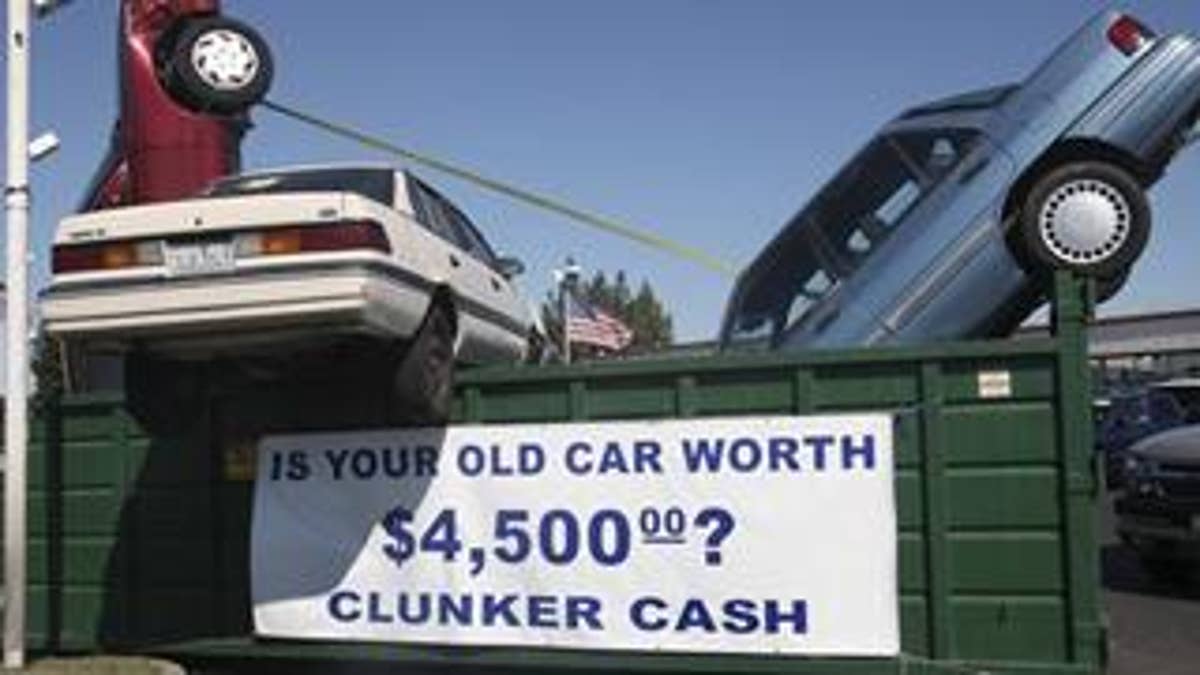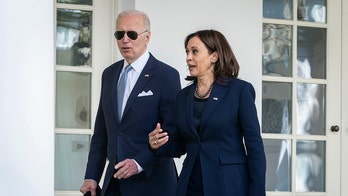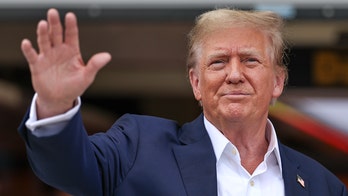
Buyer's remorse may be setting in for some who question whether the government's cash for clunkers program is really all it's supposed to be.
Sold as an economic stimulus and an environmental salve, the "cash for clunkers" program has succeeded in jump-starting the ailing auto industry. But some environmental and national security watchdogs are now arguing that the harm caused by destroying the used vehicles -- required by the government trade-in program -- may outweigh the benefits of exchanging pollution-spewing gas guzzlers for new, more efficient cars.
"Disposing of old products, a step required by most incentive and rebate programs, also has environmental costs," Gwen Ottinger, a researcher at the Chemical Heritage Foundation's Center for Contemporary History and Policy in Philadelphia, wrote in an opinion article published in The Washington Post on Tuesday.
"It takes energy to shred and recycle metals; plastic components often cannot be recycled and end up as landfill cover; and the engine fluids, refrigerants and other chemicals essential to operating products end up as hazardous wastes," she wrote.
Others say it also does nothing to reduce America's dependency on oil.
"Cash for clunkers is a historic mistake for America because it misapplies billions of taxpayer dollars to subsidize more fuel inefficient cars that are bad for our dependence on foreign oil and bad for the environment," said Edwin Black, author of "The Plan: How to Save America When the Oil Stops -- or the Day Before."
Black told FOXNews.com that lawmakers had the right idea to get more fuel efficient vehicles on the road but executed it poorly. He said it's too early to say how many vehicles purchased get 18 to 20 mpg rather than 30 to 35 mpg.
"It could have also formed the basis for a crash program of fuel switching in the event of an oil interruption, which is being threatened by Iran as recently as this morning," he said. "What we have now is a jobs program-bailout disguised as fuel efficient move."
The Senate is weighing whether to pass a $2 billion extension of the program that the House approved overwhelmingly on Friday, tripling the initial cost.
As of Monday afternoon, $536.8 million worth of rebates had been processed through the government program, representing 133,767 new vehicles, according to figures provided by the Department of Transportation. An additional 100,000 to 130,000 were expected to be processed to reach the $1 billion set aside.
Another $2 billion is expected to generate the sale of about 500,000 more vehicles.
Data released by the Obama administration showed the new vehicles purchased under the program were 61 percent more fuel-efficient than the trade-ins.
The average fuel economy of new vehicles purchased under the CARS program is 25.4 mpg and the average fuel economy of vehicles traded in is 15.8 mpg, Transportation Secretary Ray LaHood, Energy Secretary Steven Chu and Environmental Protection Agency Administrator Lisa P. Jackson wrote in a letter to senators.
"This improvement will save the typical buyer $700 to $1,000 per year in fuel costs," they wrote. "In addition to the money saved on gas, people using the program will have safer cars and lower repair costs, and they will dramatically reduce the pollution released by their vehicles."
To date, 83 percent of the trade-ins have been trucks and 60 percent of the new vehicles have been cars, the administration officials wrote. "New cars under the program are 18 percent more fuel efficient than the average new car currently available. This means the program is raising the average fuel economy of the fleet, while removing the dirtiest and most polluting vehicles from the road."
They added that nearly half of new vehicles purchased under the program are from the Big Three automakers.
But the Obama administration is refusing to release government records to substantiate the claims. LaHood said his department will provide the data as soon as possible but did not specify a time frame or promise release of the data before the Senate votes.
Even so, the fuel efficiency gains helped sway Democratic Sens. Dianne Feinstein of California and Chuck Schumer of New York and Republican Sen. Susan Collins of Maine to maintain their support for the program they had originally sponsored.
The three had complained that smaller rebates of $3,500 were going to people buying new cars that get as little as 4 more miles per gallon more than the gas-guzzlers they traded in.
"The original intent of the 'clunkers' program was to encourage people to buy more fuel efficient vehicles, and the data so far tells us that's exactly what's happening," Feinstein said in a statement. "So I believe the right decision at this time is that the program should be extended."
But Ottinger said lawmakers are not looking at all the data.
"It's likely if you're trading something in for a much more fuel-efficient vehicle, then those costs are outweighed by the fuel efficiency over the vehicle's lifetime, but that depends on the vehicle's lifetime," she said, adding that several assumptions exist in the program's stated objectives.
Ottinger told FOXNews.com that figures on energy costs in production and disposal were not readily available.
"What I do believe to be the case is the running costs of an automobile -- the costs entailed in operating the vehicle-burning gas -- is probably the bulk of energy costs and the disposal and manufacturing is relatively less."
Under the program, the government is advising car dealers to replace a trade-in's engine oil with a lethal sodium silicate solution and run the engine to ruin it before giving to selling the car to a scrap dealer.
The Automotive Recycler's Association says that means more waste, since the damage prevents the resale of parts like pistons as well as smaller profits for scrap yards, since it can cost $700 to $1,200 to process a car, including transport and removing toxic items like mercury.
ARA Executive Vice President Michael Wilson said that recycling auto parts saves 85 million gallons of oil per year in energy savings alone.
The two parts most in demand on the resale market are the engine block and the drive train, accounting for 60 percent of used-parts sales, he said. But when cars are scrapped, the engine block is destroyed by the silicon, and the drive train can be sold only under certain conditions.
"Why throw away good parts when the supply chain is in jeopardy? It doesn't make a whole lot of sense," Wilson told The Associated Press.
But Jim Burton, a service manager at Randy Curnow Buick-Pontiac-GMC in Kansas City, Mo., said other parts of the vehicle besides the engine can be recycled and that will help people who can't or wont' trade in their cars.
"Doors, hoods, transmission, interior components can be reused. But a lot of people still have these cars, they can't trade them or won't, but they're in pretty sad shape. This is going to give an opportunity for salvage yards and people to sell some of the components and maybe bring the car back to better condition," he said.
He said some people have been calling him about donating the trade-ins to charities but he added he's required to disable them.




